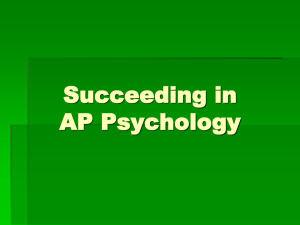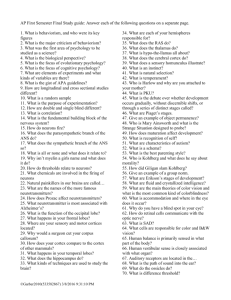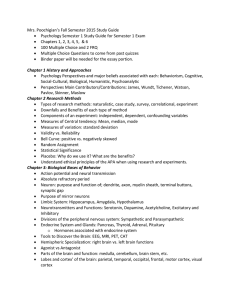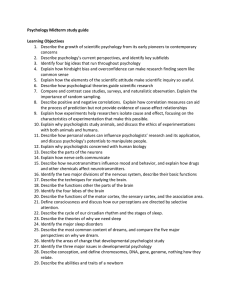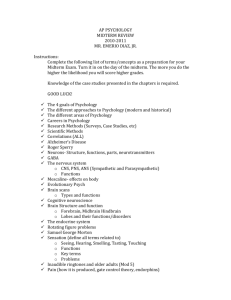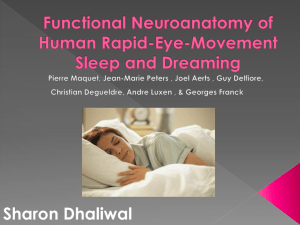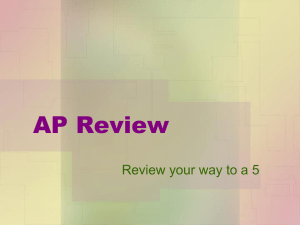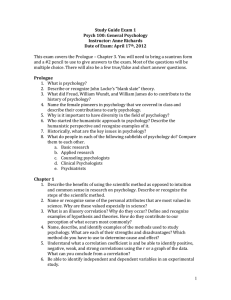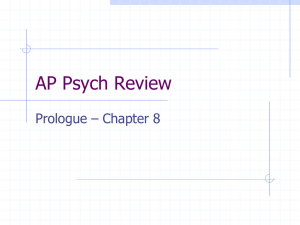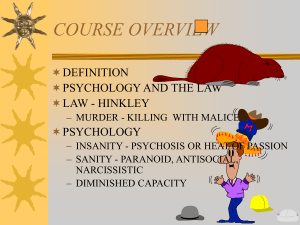Psychology Exam 1 Study Guide: Chapters 1-3
advertisement
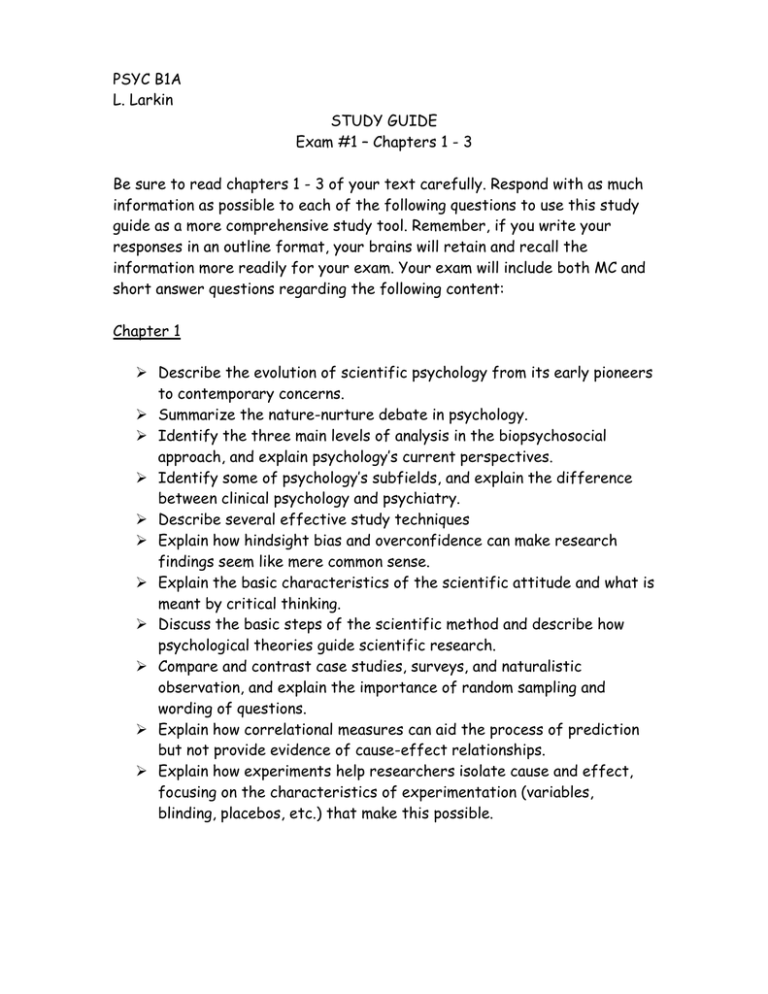
PSYC B1A L. Larkin STUDY GUIDE Exam #1 – Chapters 1 - 3 Be sure to read chapters 1 - 3 of your text carefully. Respond with as much information as possible to each of the following questions to use this study guide as a more comprehensive study tool. Remember, if you write your responses in an outline format, your brains will retain and recall the information more readily for your exam. Your exam will include both MC and short answer questions regarding the following content: Chapter 1 Describe the evolution of scientific psychology from its early pioneers to contemporary concerns. Summarize the nature-nurture debate in psychology. Identify the three main levels of analysis in the biopsychosocial approach, and explain psychology’s current perspectives. Identify some of psychology’s subfields, and explain the difference between clinical psychology and psychiatry. Describe several effective study techniques Explain how hindsight bias and overconfidence can make research findings seem like mere common sense. Explain the basic characteristics of the scientific attitude and what is meant by critical thinking. Discuss the basic steps of the scientific method and describe how psychological theories guide scientific research. Compare and contrast case studies, surveys, and naturalistic observation, and explain the importance of random sampling and wording of questions. Explain how correlational measures can aid the process of prediction but not provide evidence of cause-effect relationships. Explain how experiments help researchers isolate cause and effect, focusing on the characteristics of experimentation (variables, blinding, placebos, etc.) that make this possible. Chapter 2 Describe the parts of a neuron, and explain how its impulses are generated. Describe how nerve cells communicate. Explain how neurotransmitters influence behavior, and describe how drugs and other chemicals affect neurotransmission. Identify the two major divisions of the nervous system, and describe their basic functions. Describe the nature and functions of the endocrine system and its interaction with the nervous system. Describe the components of the brainstem, and summarize the functions of the brainstem, thalamus, and cerebellum. Describe several techniques for studying the brain. Describe the structures and functions of the limbic system. Identify the four lobes of the cerebral cortex, and explain their importance to the human brain. Summarize some of the findings on the functions of the motor cortex and the sensory cortex, and discuss the importance of the association areas. Discuss the brain’s plasticity following injury or illness. Describe split-brain research, and explain how it helps us understand the functions of our left and right hemispheres. Chapter 3 Define consciousness. What is meant by selective attention? Discuss circadian rhythms and how they relate to our sleep patterns. Describe each of the stages of sleep and the characteristics of each stage. What is the difference between REM and non-REM sleep? During what points in the night and for how long do we spend in each of the stages of sleep, including REM sleep? What effects do alcohol and sleeping pills have on REM sleep? Describe the various sleep disorders listed in your text. What is the difference between a night terror and a nightmare? How do our sleep patterns change from infancy to later adulthood? What are the differences in the dream theories that the text discusses? What is REM rebound? What are some of the strategies for getting a good night’s rest? What is known to be true regarding hypnosis? What is a psychoactive drug? In what ways do psychoactive drugs influence our neurotransmitters? What is the difference between withdrawal, tolerance, and dependence? Discuss the different classifications of drugs and the effects of each on our neurotransmitters.
